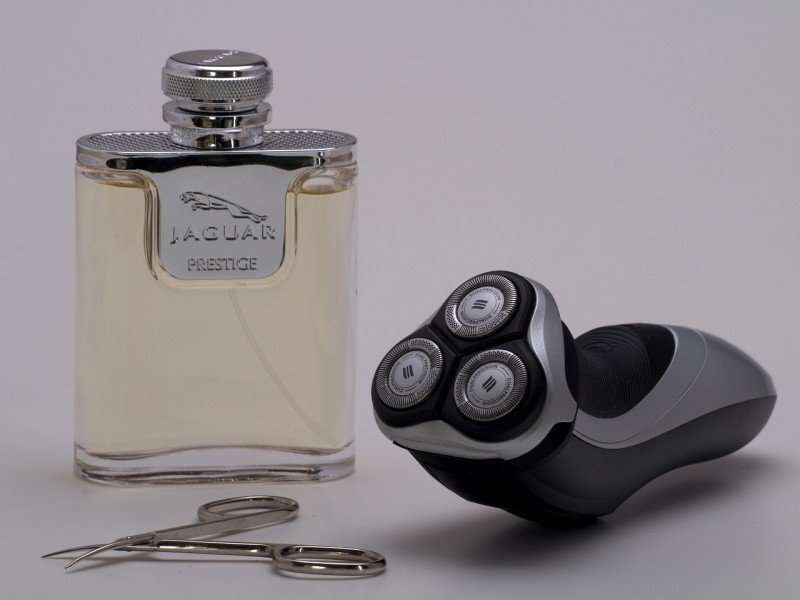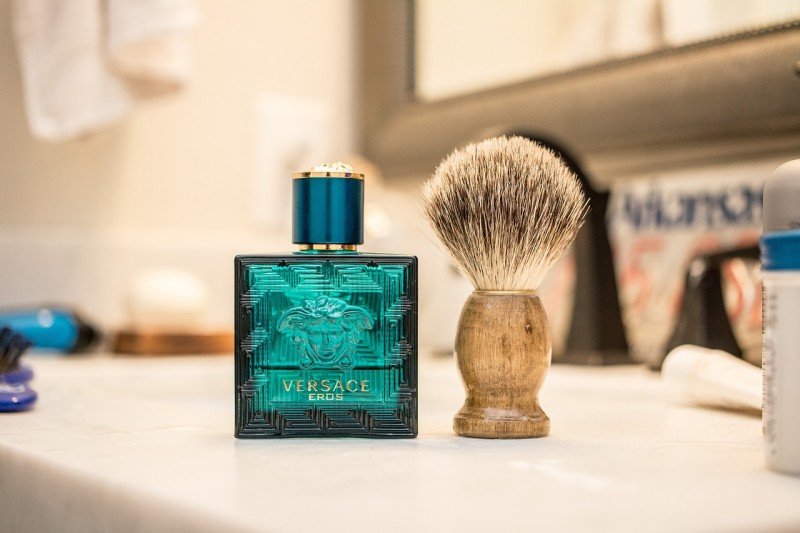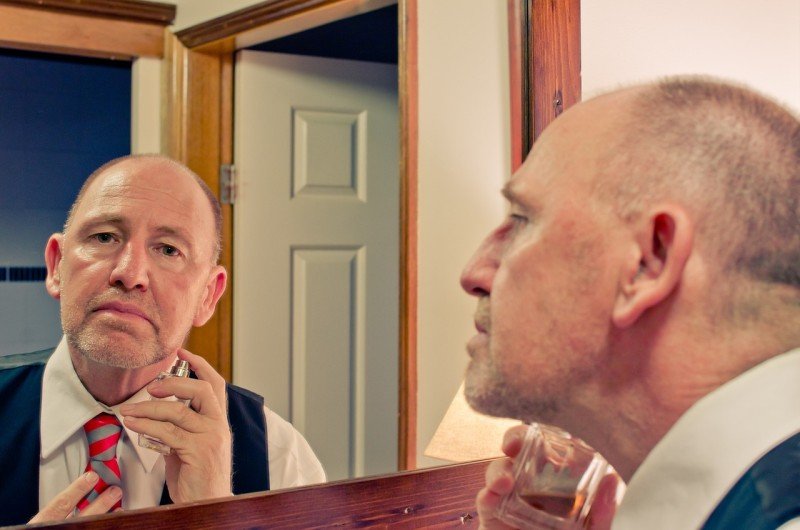Have you ever questioned the expiration of your shaving foam? Rest assured, many share your curiosity. This is a significant topic since we apply it directly to our skin.
In this article, we'll discuss the lifespan of shaving foam, proper storage techniques, and the dangers of using expired ones. The focus is to ensure your beard care routine is as effective as possible and doesn't inadvertently harm your skin.
Key Takeaways
Just like a carton of milk or a loaf of bread, shaving foam too has an expiry date. It's not just about the foam losing its effectiveness over time but also about the potential skin irritations that expired products can cause. Thus, it's always a good idea to keep an eye on the expiry dates of your grooming essentials.
Disposing of expired products responsibly is another point to keep in mind to prevent environmental harm.
Preserving your shaving supplies well can also play a role in prolonging your life. A cool, dry place away from direct sunlight is ideal for storage. After all, maintaining a clean and hygienic personal grooming routine is more than just about looking good - it's about feeling good and staying healthy too.
Shelf Life of Shaving Cream
It's common to find that shaving creams don't usually carry a clear expiration date on their packages. The reason for this is the inclusion of preservatives in these products, which are effective in protecting against bacteria, fungus, and yeast. This gives the shaving cream a general shelf life of several years. But note, no printed expiry date doesn't mean the shaving cream will remain forever fresh.
When we look at other shaving products, there are noticeable variations. For example, traditional shaving soaps and creams that don't contain synthetic preservatives tend to degrade quicker, usually lasting around one or two years. With time, their effectiveness may also decrease.
Gel-based products, a newer alternative to foam, generally have a longer shelf life due to the high preservative content, which prevents microbial growth and helps maintain consistent performance.
So, even though the shelf life of shaving cream mightn't be directly stated, the composition of the product significantly affects its lifespan. It's useful for consumers to keep this in mind when they're shopping for shaving supplies. In other words, when comparing products, it's worth considering not only the price and the brand but also factors such as shelf life and how well the product performs over time.
Expiry Dates of Shaving Products
The lifespan and effectiveness of various shaving products can be difficult to grasp, but it's not an aspect you should ignore. Understanding the meaning of expiry dates is vital, as they often indicate the product's preservation and the potency of its ingredients.
Shaving items are made up of a variety of ingredients, each with its own stability and lifespan. The expiry date gives a hint about when these elements might start to decline in their effectiveness.
For a clearer picture, here's a handy table:
| Shaving Product | Average Lifespan | Signs of Expiry |
|---|---|---|
| Shaving Foam | 2-3 years | Change in smell, consistency |
| Shaving Gel | 2-3 years | Change in color, separation |
| Shaving Cream | 1-2 years | Rancid smell, change in texture |
| Aftershave | 2-3 years | Change in smell, color |
Bear in mind that these figures aren't set in stone. Influencing factors such as how the product is stored and how often it's used can affect these timelines. Hence, it's sound practice to always check the packaging for specific expiry dates. It's key to remember using an expired shaving product won't just impact its efficacy, but it could also lead to skin irritation. As the saying goes, better safe than sorry.
Ideal Storage Conditions for Shaving Foam
To extend the usability of your shaving foam, it's beneficial to be familiar with the perfect storage conditions. Environmental aspects like temperature and humidity considerably impact the product's quality and efficacy. So, let's understand the relationship between these environmental elements and shaving foam and learn the best way to store it.
It's important to note that the storage environment of your shaving foam can profoundly impact its quality. For instance, exposure to extreme temperatures or high humidity can degrade the foam, making it less effective when you're ready to shave. Hence, storing your shaving foam in a cool, dry place, away from direct sunlight, is advisable.
In the words of a skincare expert, 'Proper storage conditions can significantly prolong the effectiveness of your shaving foam, ensuring you get the most out of your product.' Therefore, understanding the ideal storage conditions isn't just about extending the product's lifespan but also about maximizing its performance. So, make sure to keep these tips in mind the next time you're storing your shaving foam.
Temperature Impact
The effects of temperature on your shaving foam can't be understated. The components of the foam, as well as its aerosol functionality, are susceptible to temperature variations.
Here's how to store your foam correctly:
Location is Key:
-
Choose a spot that's cool and dry for your shaving foam. Extremities in temperature can alter the aerosol's operation, which can hamper the foam's application to your skin.
Steer Clear of the Sun's Rays:
- Direct sunlight can increase the can's internal pressure through heat, potentially leading to the deterioration of the foam's ingredients or even a burst can.
By paying attention to these factors, you can ensure that you get the maximum performance from your shaving foam.
In return for a little care, your foam will ensure a consistently smooth and enjoyable shaving experience.
Humidity and Moisture
You mightn't have given it a thought, but humidity and moisture are vital factors in maintaining the efficacy of your shaving foam. Why is this so? The answer is simple. High levels of humidity and moisture are breeding grounds for mold and bacteria.
Dry and ventilated storage conditions are preferable to lessen these risks.
Now, you may ask, how does humidity affect my shaving foam? When your shaving foam is subjected to excessive moisture, it can jeopardize its chemical balance. This can lead to a decrease in its effectiveness and shorten its shelf life. And that's not all.
Damp environments can trigger an increase in bacteria, which in turn could lead to skin infections. The solution? Always ensure your shaving foam is securely sealed after use and kept in a cool, dry spot. By doing this, you not only prolong its shelf life but also ensure it remains effective.
Remember, 'Prevention is better than cure.' Taking these simple measures can save you from potential skin problems and ensure a smooth shave every time.
Lifespan of Beard Care Products
As with most things, your beard care products aren't designed to last indefinitely. Their lifespan can vary, influenced by factors such as your beard growth rate and the use of product alternatives.
How Your Beard's Growth Influences Product Longevity: The speed at which your beard grows can determine how quickly your products deplete.
-
For those with fast-growing beards: Products will be used up more quickly, which shortens their lifespan.
-
For those with slow-growing beards: You may find your products persist for longer due to less frequent use.
The Impact of Product Alternatives on Lifespan: The type of products you choose can also affect their longevity.
-
Choosing Natural Alternatives: Options like coconut oil or aloe vera often outlive their synthetic counterparts.
-
Choosing Synthetic Alternatives: These typically have a set expiration date, signaling a shorter lifespan compared to natural products.
One thing to keep in mind is that even if your beard care products have an expiration date, it's necessary to keep an eye on them for any signs of spoilage, such as changes in smell, texture, or color. These could be signs that the product is no longer safe for use.
As the timeless saying goes, 'All good things must come to an end', and this includes your beard care products. So, make sure to monitor them regularly and replace them as needed for the best possible beard care.
Dangers of Using Expired Shaving Supplies
While every grooming product has a certain shelf life, keeping an eye on the expiration date of your shaving foam is especially critical. Using out-of-date items could expose you to several health hazards. Keeping your razor clean is of the utmost importance, as expired foam can negatively affect this, increasing the chances of skin infections.
| Hazards | Reasons | Ways to Avoid |
|---|---|---|
| Skin Discomfort | Outdated shaving foam can provoke skin discomfort due to the breakdown of its active compounds. | Always verify the product's expiration date before use. |
| Infections | Inadequate razor cleanliness coupled with outdated foam can foster bacteria, resulting in skin infections. | Consistently clean your razor and change out-of-date products. |
| Unexpected Allergic Responses | Out-of-date items can also trigger unforeseen allergic responses as their ingredients change over time. | Be aware of any skin changes after using aged products. |
Apart from these, there's a chance of diminished performance. As time passes, the foam's qualities deteriorate, affecting its capacity to ensure a clean shave and causing minor injuries and cuts. Hence, it's advisable to frequently renew your shaving supplies to uphold skin health and guarantee an optimal shaving experience.
"Always remember, outdated shaving supplies are not just ineffective but can also become a health hazard. It's always better to stay on the safe side, maintaining hygiene and ensuring product validity," advises a skincare expert.
Disposal Methods for Old Shaving Foam
Often, you might stumble upon an old can of shaving foam that needs discarding. It's vital to handle this task with an environmentally conscious mindset. The recklessness in disposal can significantly impact our environment due to the harmful gases contained in aerosol cans, which can damage the Earth's ozone layer.
Here's a guide to help you discard your old shaving foam responsibly:
Recycling:
- Detach the plastic cap and recycle it separately.
-
Confirm the can is entirely devoid of any residual foam before recycling.
Trash Disposal:
- Should recycling not be feasible, it can be thrown away with your regular trash. Ensure it's completely empty to minimize any potential environmental damage.
In addition to disposing, here are some alternative uses for your old shaving foam:
Cleaning:
-
You can use shaving foam as an efficient cleaning agent for mirrors, jewelry, and even ovens.
Art and Craft:
- It can serve as a safe, enjoyable paint for children's art activities.
Proper disposal or reuse of items goes beyond just maintaining a tidy space—it's a small yet practical step towards reducing your environmental impact. By being conscious of the environmental effects and exploring alternative uses, you're contributing to a more sustainable lifestyle.
Frequently Asked Questions
What Are the Ingredients Commonly Found in Shaving Foam?
When you use shaving foam, you interact with various ingredients. The usual components found in this product are water, stearic acid, triethanolamine, butane, and various fragrances. Understanding the potential chemical effects of these substances on your skin is essential, particularly when comparing foams to lotions.
Is There a Difference Between the Expiry of Shaving Foam and Shaving Gel?
Indeed, there is a noticeable variation. Factors such as the storage conditions and the inherent lifespan of aerosol containers influence the expiry of shaving foam and shaving gel. Typically, shaving foam tends to have a longer shelf life thanks to its sturdy packaging. On the other hand, shaving gel might deteriorate faster, especially when not stored in appropriate conditions.
Proper storage and understanding of product shelf life can ensure you get the most out of your shaving foam or gel.
Are There Any Eco-Friendly Alternatives to Traditional Shaving Foam?
Absolutely, embracing green habits in your grooming routine is possible. Rather than relying on conventional shaving foams, consider the benefits of creating your own organic shave creams. These homemade alternatives not only contribute to the environment's well-being, but they are also free from damaging chemicals. Moreover, they can be tailored to suit your skin's specific requirements effectively.
Our Final Thoughts
Is your shaving foam just collecting dust on the shelf? It shouldn't be!
Like many other products, shaving foam has a shelf life and can go bad over time. Using expired shaving foam can potentially harm your skin, so you should always check the expiration date of your shaving supplies. Proper disposal of expired products is also essential to avoid any potential problems.
Make sure to store your shaving supplies in a cool, dry place to extend their shelf life. Remember, shaving is a part of personal hygiene, so keep your shaving tools clean and safe to use.


